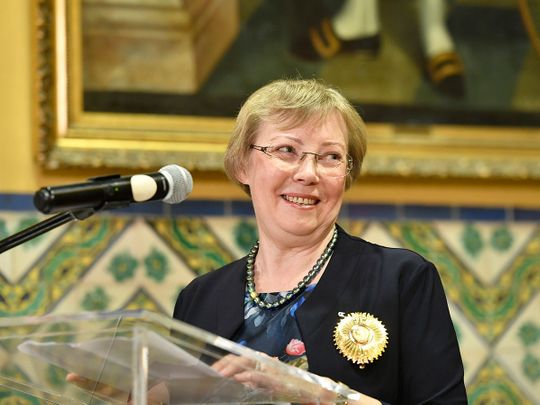
Seventeen-year-old Juliane Koepcke was completely alone. There was no sound except the wind whistling in her ears. She was upside down, strapped to her aeroplane seat bench, and plummeting 3,200 metres from the sky, freefalling into the unknown.
Click start to play today’s Word Search, where the word “brave” inspires this tale of a survivor.
On Christmas Eve, 1971, German-Peruvian teenager Koepcke was travelling with her mother on LANSA flight 508 from Lima to Pucallpa, in Peru. They were planning to reunite with her father at his research station in the Amazon rainforest. Both Koepcke’s parents were well-known zoologists, and she had lived with them at the research station for over a year in the past. So, she was not completely unfamiliar with the habitat.
This knowledge is likely what saved Koepcke in the days after she fell from the sky into the rainforest. The plane encountered a thunderstorm, and when lightning struck, its wing tore off, causing the aircraft to break apart and nose dive. All 92 of her fellow passengers died, but somehow, Koepcke remained strapped to a row of seats as the plane plummeted. She lost consciousness and woke up the next day, with a broken collarbone, deep cuts on her legs and a ruptured ligament in one knee. But she had survived.
Koepcke knew what to do next. She spotted a bag of sweets among the debris, so she took it with her. And for the next 10 days, she walked.
When she found a small creek, she walked in the water because her father had taught her that it was safer than walking on land, where snakes could lie hidden out of sight. In her 2012 interview with the BBC, she said she heard the scream of a king vulture as she walked, and knew that they only landed when there was a lot of carrion. She realised then that the bodies of passengers had attracted it.
Whenever Koepcke came across dead bodies, she found herself paralysed with panic – it was the first time she had ever seen deceased people. Still, she always checked to see if one of them could be her mother.
As she tried to find her way, the teenager remembered her father telling her that walking downstream would eventually lead to civilisation. So Koepcke walked or floated through the water and steadily made progress. But her wounds became infected, and she was plagued by maggots. She also had to always be on alert for crocodiles, piranhas and ravenous insects.
Eventually, when she thought she couldn’t go on any longer, she saw a large boat by the river she was following - something she thought was a hallucination, until she felt its solid shape under her hands. She walked a little further and found a hut with a thatched roof. Recalling another tip from her dad, she used the gasoline she found there to clean her wounds and get rid of the maggots. Then, she rested in the hut and waited for help.
On the 11th day since the crash, Koepcke finally heard the voices of people outside the hut – Peruvian lumberjacks. They were stunned to see her and when she told them her story, they immediately helped treat her wounds and give her food. She was finally reunited with her grieving father the next day.
Rescue teams would later find her mother's body in the rainforest. An autopsy would show that she, too, had survived the crash, but could not move because of her grievous injuries. She died several days later. Koepcke told the BBC that she dreaded to think what her mother's last days were like, and the terrible ordeal she had faced.
Years later, Koepcke became a mammologist and returned to Peru to conduct her research. Her bravery and persistence are the subject of her autobiography, several documentaries, and even a Werner Herzog-directed film called Wings of Hope, which was released in 1998.
Are you inspired by her act of bravery? Play today’s Word Search and let us know at games@gulfnews.com.







